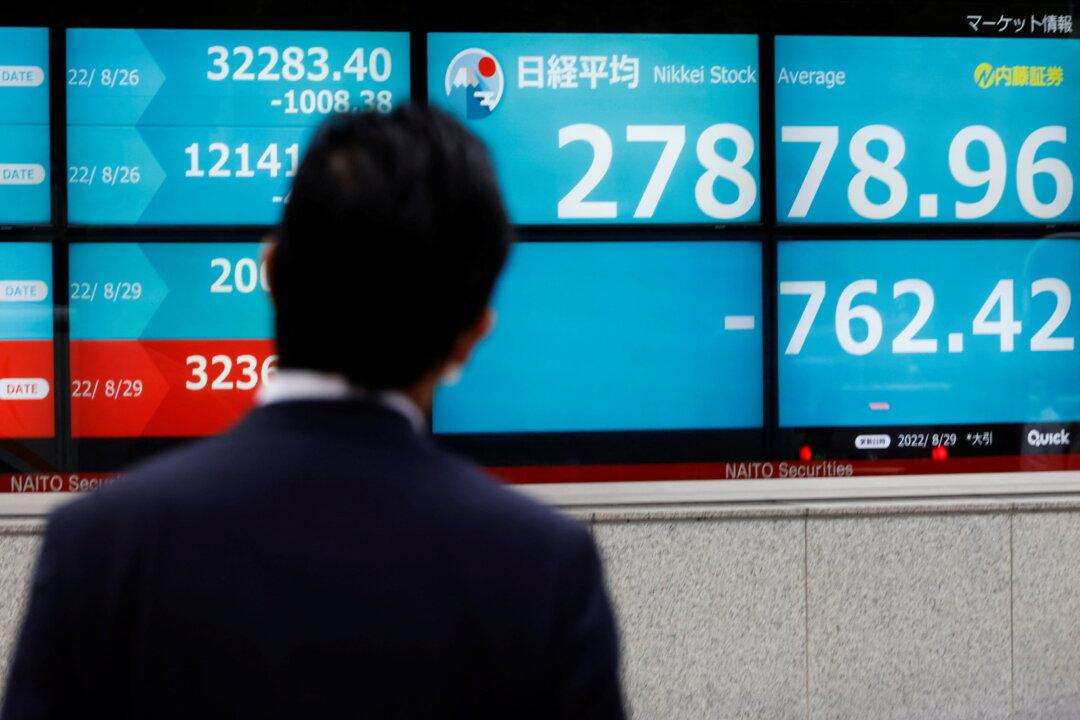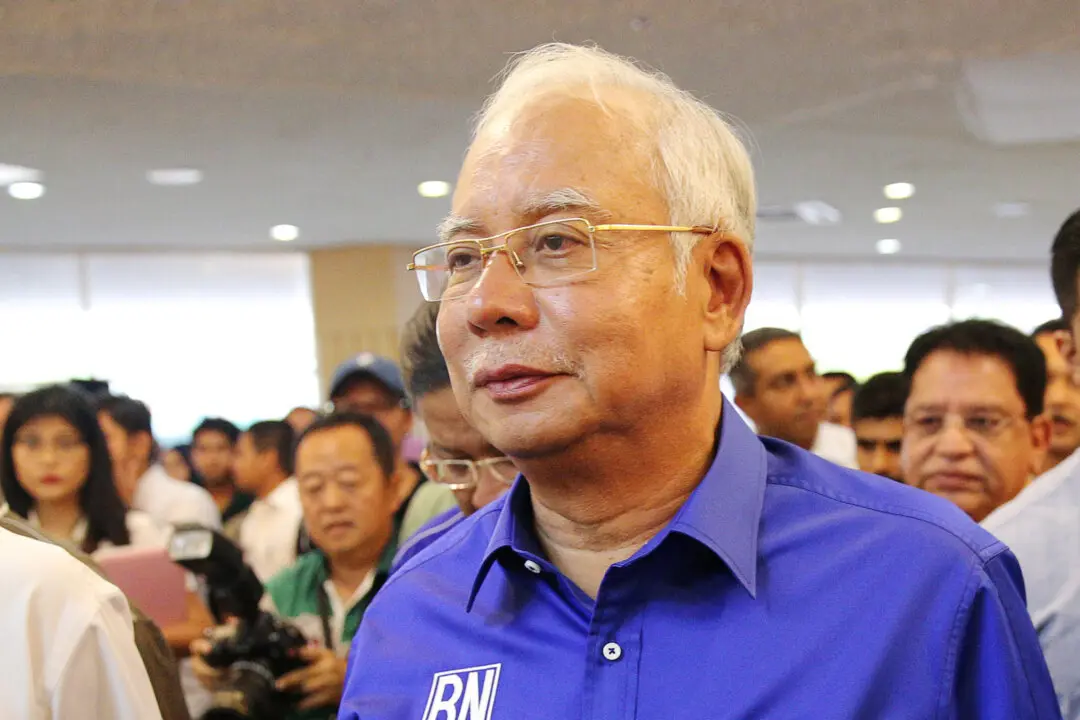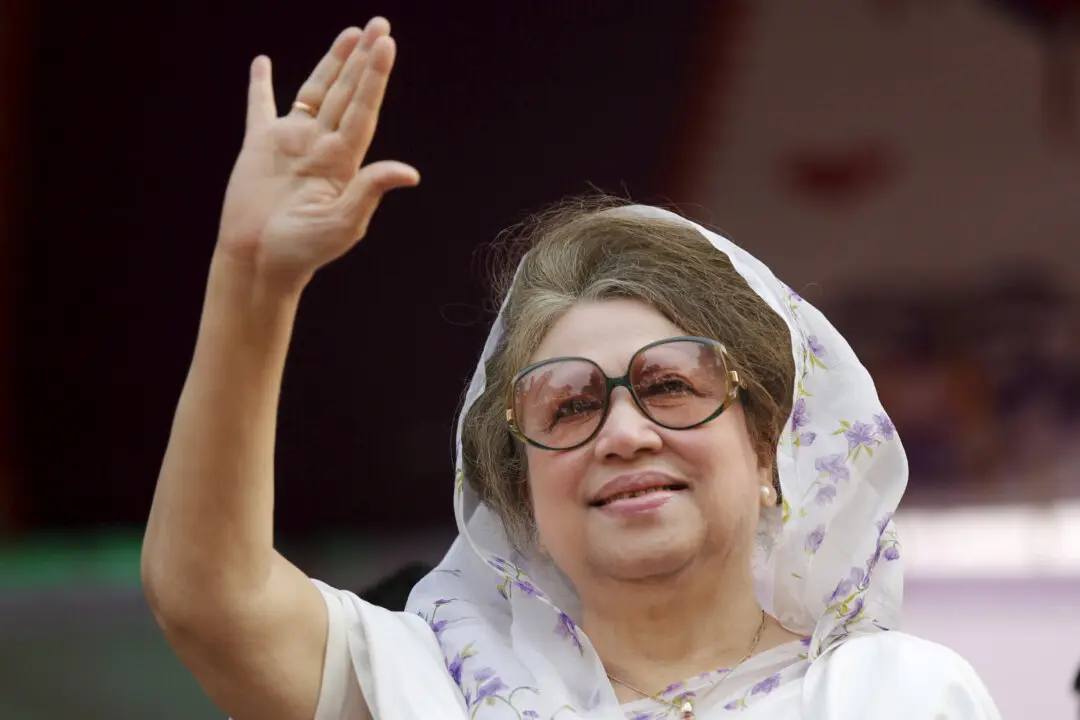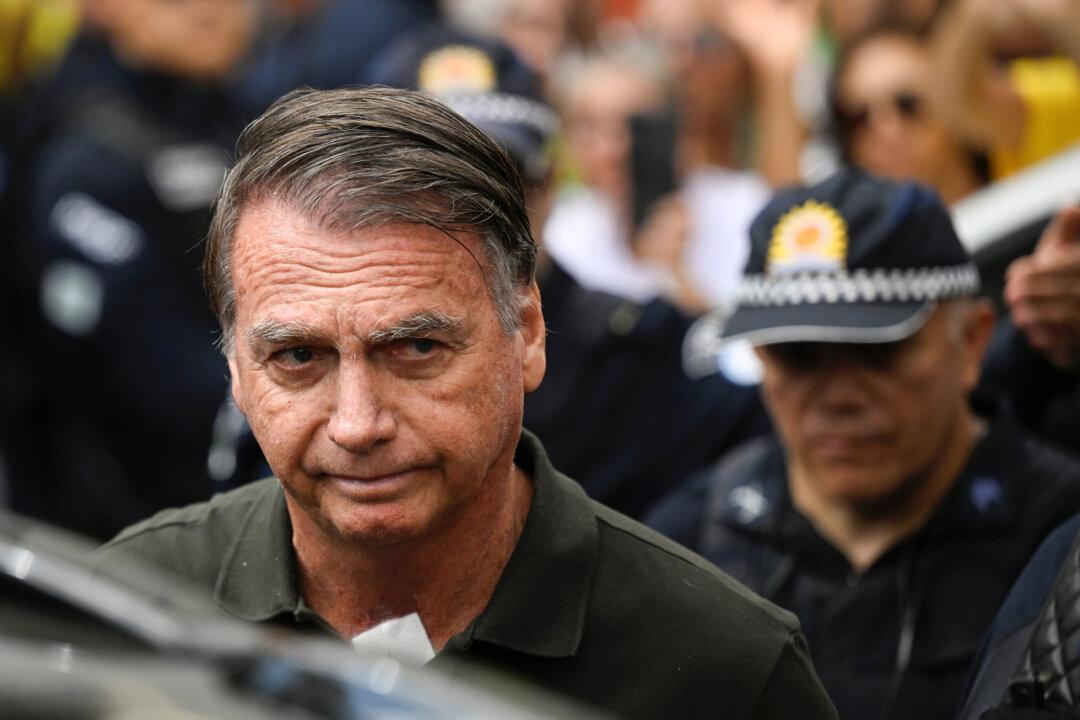HONG KONG/LONDON—Shares crept up slightly and bonds held steady on Tuesday as investors awaited the next round of likely gloomy inflation data while also juggling concerns about Europe’s energy crisis, a looming recession, and more rate hikes.
The pan-European STOXX index rose nearly 1 percent, led by bank shares as lenders were lifted by increased expectations of European Central Bank rate hikes, while MSCI’s broadest index of Asia-Pacific shares outside Japan rose 0.6 percent.





